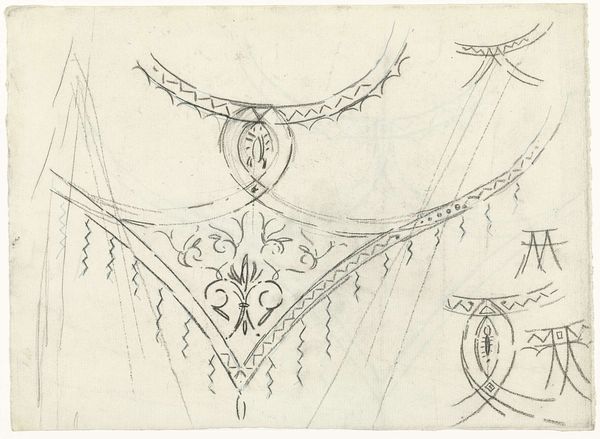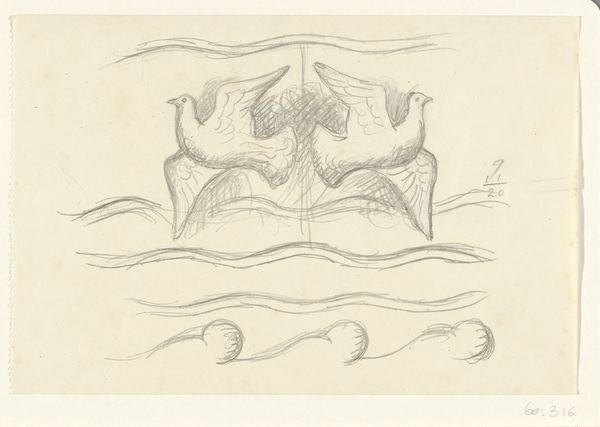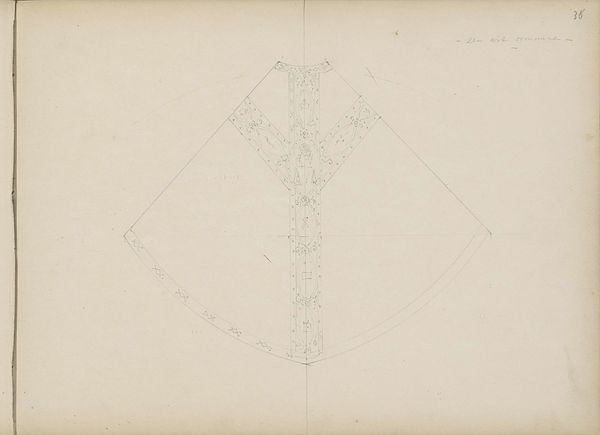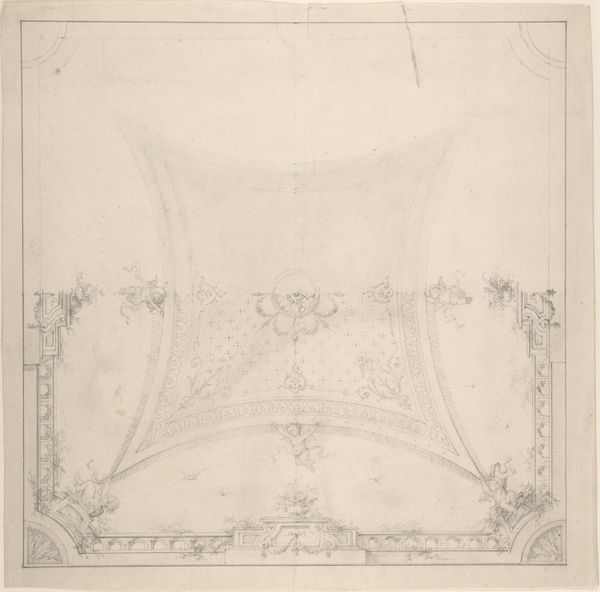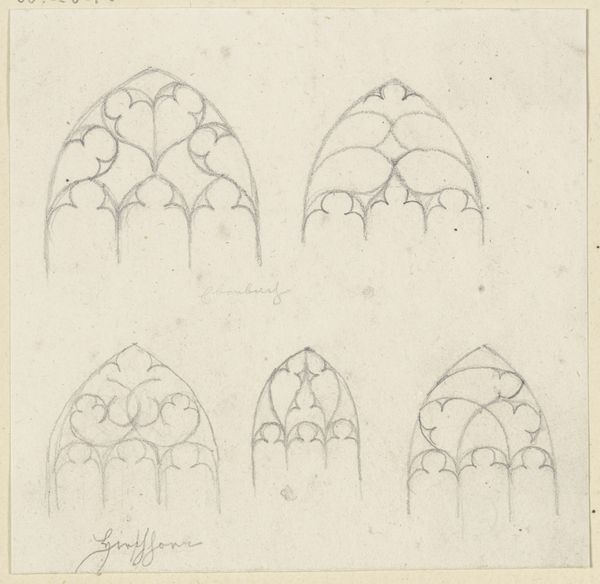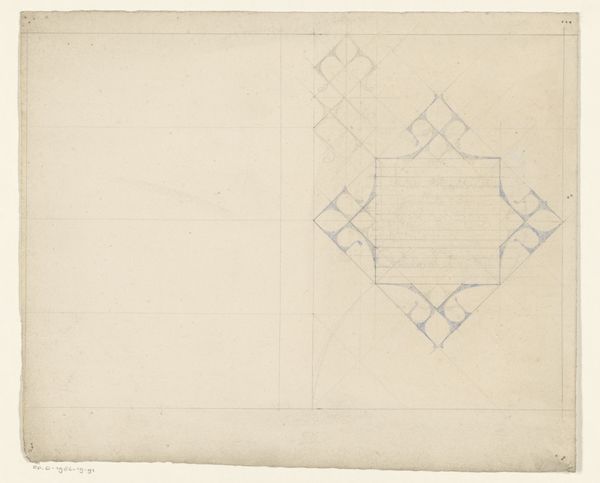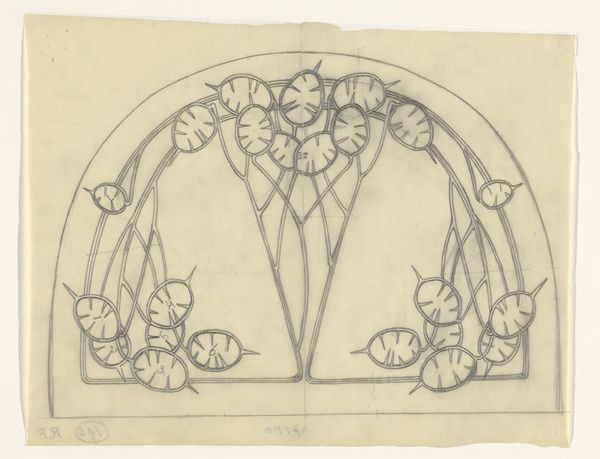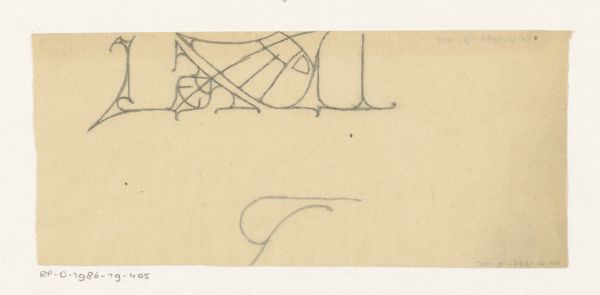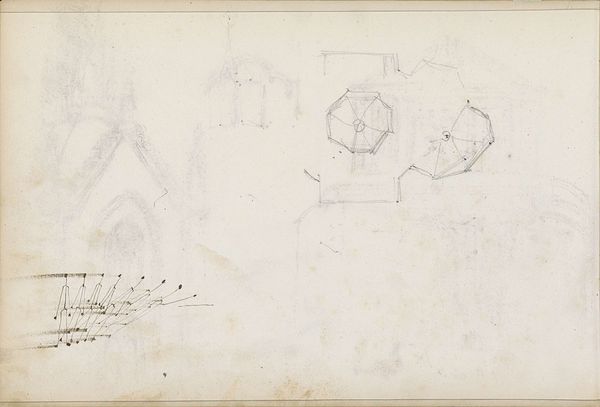
drawing, ornament, paper, pencil
#
drawing
#
ornament
#
art-nouveau
#
etching
#
paper
#
form
#
geometric
#
pencil
#
line
Dimensions: height 212 mm, width 291 mm
Copyright: Rijks Museum: Open Domain
Curator: At first glance, this piece feels incomplete, like a fleeting architectural vision only partially remembered. Editor: What you're responding to is Gerrit Willem Dijsselhof's "Ontwerpen voor ornamenten," or "Designs for Ornaments" housed here at the Rijksmuseum. Executed in pencil and etching on paper, likely sometime between 1876 and 1924, it embodies the essence of Art Nouveau through simple lines and forms. Curator: Art Nouveau! Yes, now that you say it, I can definitely see that in the delicate yet bold lines! There's something both fragile and confident in the way it suggests ornamentation without fully defining it. Do you think that's intentional? Editor: It’s entirely plausible. Dijsselhof, working at the height of Art Nouveau's influence, saw the societal potential of art interwoven with everyday design. Designs like these offered architects and artisans a toolkit. Ornamentation held social power, it democratized beauty by weaving it into structures for all people. Curator: Democratizing beauty... I love that thought. It almost feels rebellious, challenging the elite by bringing artistry to the masses. The use of simple shapes—triangles, arches—does make it feel accessible, like anyone could pick up a pencil and contribute. I wonder, does the museum have other works of his to see how these sketches were put into use? Editor: The museum holds other designs of his that demonstrate this desire for accessibility. By examining the collection together we see he’s investigating form itself. Lines suggest rather than dictate the parameters of our perception, the relationship between order and fluidity that encapsulates Art Nouveau's revolutionary aesthetic vision. Curator: Thinking about it, those hesitant, zig-zag lines—they aren’t just decorative, they speak to an attempt to communicate the invisible, to sketch the immaterial sensations or a mood. Like capturing the shivers that run down one's spine standing beneath a soaring ceiling. Editor: I agree wholeheartedly. These sketches whisper rather than shout. The emptiness that remains evokes the power of Art Nouveau which offered beauty for all in simple forms, so anyone can participate. Curator: What a stunning thought to end on! To leave a legacy through quiet strokes, giving birth to beautiful possibility. Editor: Exactly, an idea etched gently for us to rediscover anew.
Comments
No comments
Be the first to comment and join the conversation on the ultimate creative platform.
